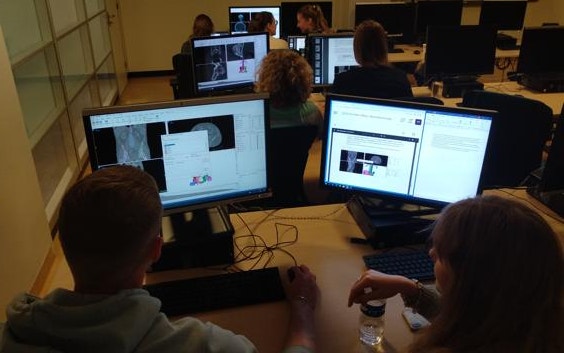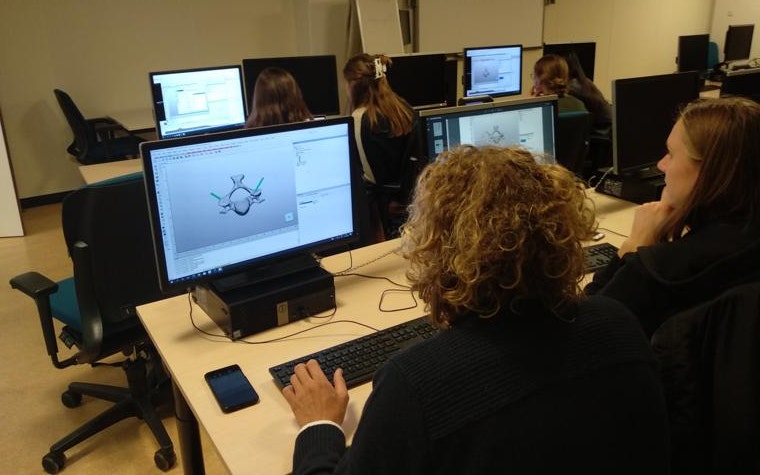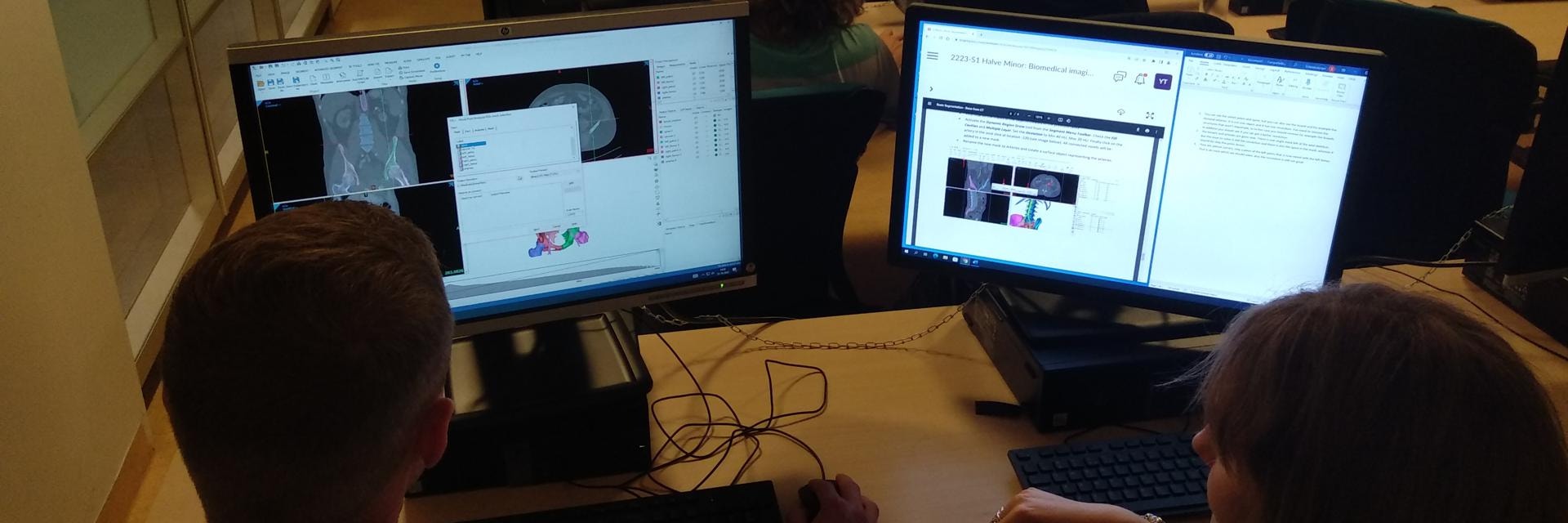
INTERVIEW
The Right Tools Can Kickstart Careers — And Raise Demand for the Schools That Provide Them
With a course book to guide educators, a Mimics user certification program, and multiple affordable software-licensing avenues, Materialise Mimics makes research advancements with mass personalization possible in an academic setting. LUMC’s Dr. Bart Kaptein explains how the Mimics University Site License helps prepare his students for a career in healthcare.
Universities have a unique responsibility: to ensure the leaders and innovators of tomorrow have access to the tools and knowledge they need to succeed. By offering early experience with the industry standard toolbox, they can help ease the students’ integration into the job market and make them a more attractive prospect for employers. This, in turn, can only make the faculties that provide this experience more desirable. Mimics has long been trusted by physicians and pioneering medical device companies alike, and now, thanks to the Mimics University Site License, it has never been easier for universities to integrate it into their curriculum.
To find out more about the impact this software has on medical education, we sat down with Dr. Bart Kaptein, a Biomechanical Engineer and lecturer in the Technical Medicine MSc program at the Leiden University Medical Center (LUMC).
Hi, Dr. Kaptein. Could you please begin by telling us about the Technical Medicine MSc program?
The Technical Medicine MSc program is a multidisciplinary program that links science and technology with clinical practice and its professional procedures. It combines a thorough understanding of biomechanics and the influence of disease processes with an equally comprehensive understanding of medical technology and professional medical procedures.
This Joint-Degree Master's program is offered by the Leiden University Medical Center (LUMC), Erasmus University Medical Center (Erasmus Rotterdam), and Delft University of Technology (TU Delft).
You now teach a course within this program. Who is it intended for, and why should they be excited about enrolling?
The Computer-Aided Reconstructive Surgery (CARS) course is attended exclusively by students following the Imaging & Intervention track of the Technical Medicine MSc program. Although it is an obligatory course, many students find it very interesting as it is close to daily clinical practice, and it provides a good example of the role clinical technologists would have in a hospital.


Why did you decide to set up this course?
The goal was to offer a course that was a bit more practical and fun at the end of a year full of theory about clinical and technical subjects. Although my experience with education was rather limited, I tried to create a course that I would have been interested in during my education at TU Delft. I teach the students about the tools and methods used in computer-aided reconstructive surgery. Both theory and practical work are involved, and many of the lectures are given by medical professionals who talk about their challenges in daily clinical practice.
What sort of challenges do you face when setting up a course like this?
Alongside the challenge of dealing with a course schedule that changes every year, it is also difficult to provide professional software such as Mimics to the students. As some students have laptops that are not supported by Materialise, we also make use of some remote desktop computers from TU Delft. Due to the students having many teachers, it is also a challenge to avoid repetitive content.
What tools do you use in your class to teach patient-specific treatments?
During the course, we use Mimics in all practical work. Students work in small groups on real clinical cases. At the beginning of the course, they go through tutorials in order to get acquainted with the software. At the end of the course, the students create a treatment plan and patient-specific implant or cutting guide for a complex clinical case. For this last assignment, they start with some medical imaging datasets, such as CT and MRI, and a small description of the clinical case. In addition, we also demonstrate the use of computer-aided navigation to execute a patient-specific treatment plan in the operating room.


Why did you choose the Mimics University Site License?
Mimics is very useful for this course. It provides a good combination of user-friendliness and usability for a physician, but also a relatively large number of tools and the freedom to use them so that a person with more advanced capabilities is not limited. The combination of Mimics Core and 3-matic provides a complete toolset.
Why is it important for your students to get hands-on experience with the software?
Having hands-on access to Mimics is important to understand and realize that although personalized surgery seems relatively easy and standardized, it still involves many manual steps that are different for different cases. It’s also an opportunity to have them work with the industry-standard toolkit right from the beginning, making it easier for them to transition into the workforce. That will not only help to kickstart their careers but also help them offer more value to their employers. Of course, if students know that our universities can provide that opportunity, it helps to raise our stature, too. We’ll become more appealing ourselves.
What career opportunities can aspiring clinical technologists expect after graduation?
Clinical technologists work mainly in top clinical or academic hospitals but also in healthcare-related companies. They can work in various subfields of medicine, such as cardiology, surgery, neurology, radiology, nuclear medicine, and intensive care, but also in multidisciplinary roles like 3D planning of surgeries or artificial intelligence. In doing so, the clinical technologist contributes to diagnosing or treating complex patient-specific cases. They are closely involved in the scientific research of these departments, as well as innovation processes for new technological applications. Because of their specific expertise, the clinical technologist is often involved in multidisciplinary teams.
What impact will personalization and patient-specific treatment will have on the world? And how will it evolve in 10 years?
Personalization and patient-specific treatment will bring medicine to the next level. The biggest advancement will be in patient-specific drug prescriptions. In orthopaedics, I am not convinced that standard solutions such as total knee arthroplasty and total hip arthroplasty should or will be replaced by personalized solutions, but for specific treatments and patients, a tailored solution will provide better results.


Do you also research personalized treatments? What are the challenges, and what is your dream?
I do, although the limited numbers and the large variety of clinical cases make it difficult to do clinical research. As an engineer, I try to create tools that are useful in daily clinical practice and improve healthcare. Setting up a digital bone bank is one of these projects.
Thank you to Dr. Kaptein for his time and fantastic insights. We look forward to seeing what comes from his great work in the future.
L-102959-01
Share on:
You might also like
Never miss a story like this. Get curated content delivered straight to your inbox.
